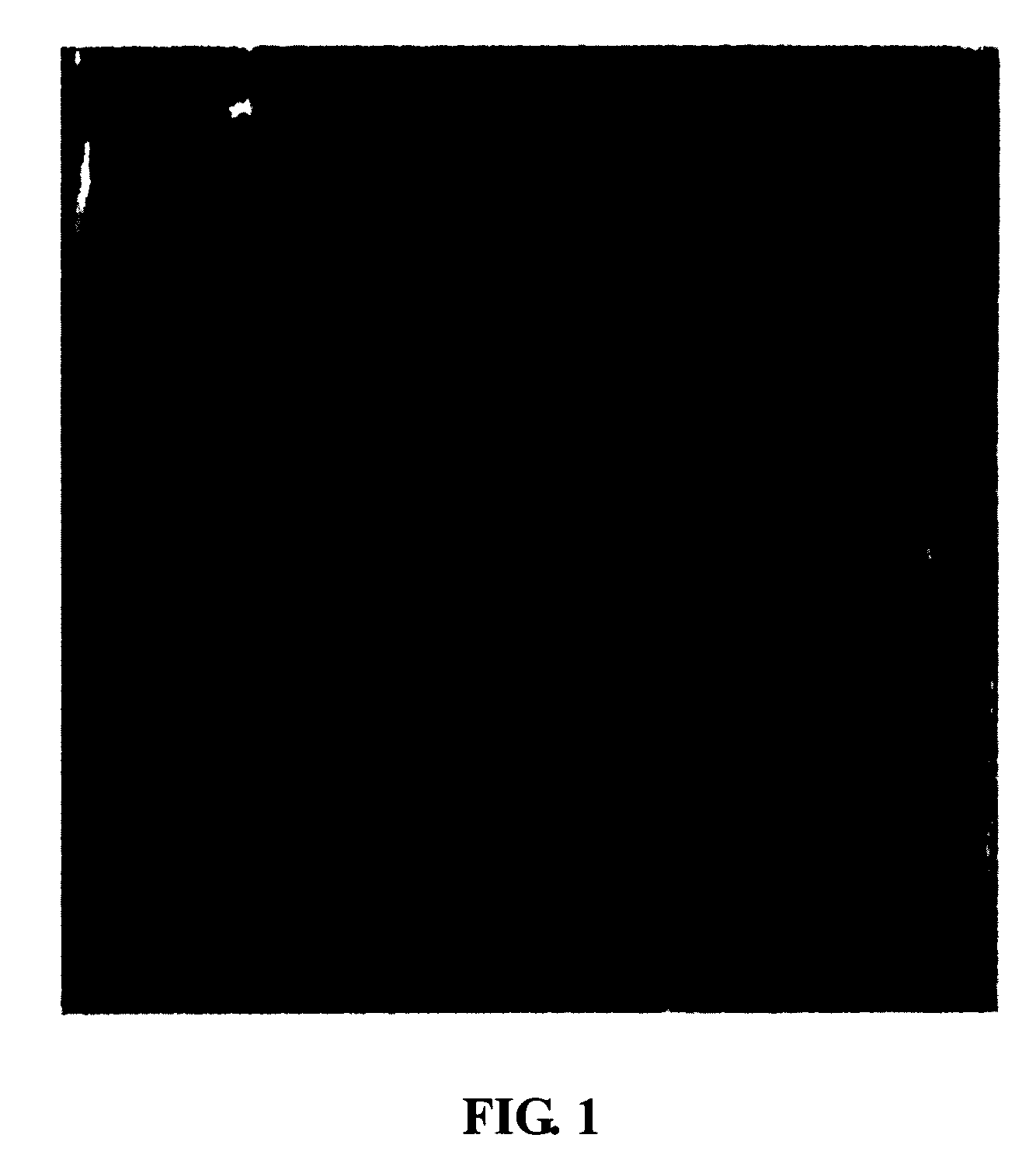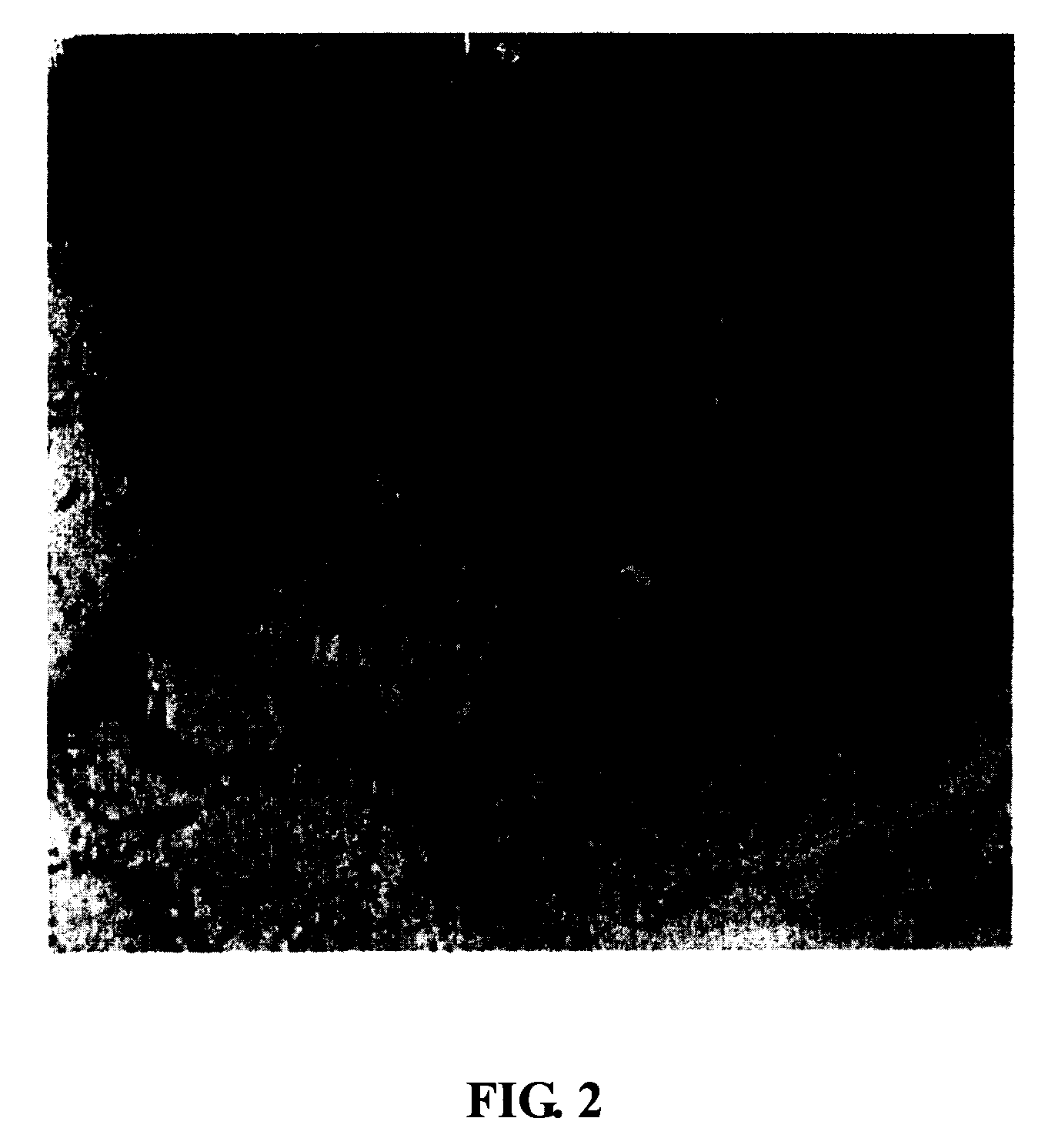Methods for diagnosing and for monitoring the treatment of recurrent spontaneous abortion
a technology for recurrent spontaneous abortion and monitoring of treatment, applied in chemical methods analysis, chemical indicators, instruments, etc., can solve problems such as serious adverse side effects of therapy
- Summary
- Abstract
- Description
- Claims
- Application Information
AI Technical Summary
Benefits of technology
Problems solved by technology
Method used
Image
Examples
example 1
[0061]Loss of the fibronectin band outside the fetal trophocytes in early secondary RSA cases
[0062](1) A number of early secondary RSA patients with a history of artificial abortion were monitored when they got pregnant again. When the termination of fetal development was detected, fetus samples of RSA with intact placental villus were obtained by drug abortion.
[0063](2) Fetus samples from subjects without a history of RSA were obtained by drug abortion and used as control.
[0064](3) Placenta samples were fixed by 10% neutral formalin, dehydrated, embedded in paraffin, sliced to 4-5 μm tissue slices, and stained with HE. It was observed that there was no significant difference between the two groups of placental tissue under microscope.
[0065](4) Fresh placenta samples were fixed by 2.5% glutaraldehyde and made into slices by a conventional method to observe under transmission electron microscope. It was found that there was a dense protein net outside the trophocytes of control sampl...
example 2
[0067]Determination of the level of antinuclear antibody in peripheral blood of early secondary RSA patients
[0068](1) Mixture of chromosome No. 2 derived from a plurality of men (generally more than 20) was prepared.
[0069](2) The mixture of chromosome No. 2 was diluted to the concentration of 10 chromosomes per field of oil immersion objective by coating buffer (0.05M sodium carbonate buffer, pH 9.6) to coat polystryrene microplate (ELISA plate).
[0070](3) 50 μl of a patient's serum diluted by different diluting factors (1:64, 1:128, 1:256, 1:512, 1:1024) by buffer (PBS buffer containing 0.1% bovine serum albumin, pH 7.4) was added to each reaction well. The reaction lasted for 30 minutes at 37° C. Then the reaction wells were rinsed by PBS buffer (pH 7.4) twice.
[0071](4) 50 μl of mouse anti-human IgG antibody labeled with horse radish peroxidase (purchased from DAKO) was added into each reaction well. The reaction lasted for 30 minutes at 37° C. Then the reaction wells were rinsed b...
example 3
[0075]Case 1
[0076]The patient had been married for 17 years when she visited the doctor for RSA. Her first and second gestations during 1982-1996 were ended by artificial abortion on the 8th gestational week. She wanted a baby when she was pregnant in 1999 for the third time. However, on the 8th gestational week, the patient had abdominal pain and then bled from vagina. Ultrasonic detection showed the termination of the fetal development. Then the abortion happened. Artificial contraception had been carried out since then. Other possible causes of abortion had been excluded through examination. The level of antinuclear antibody in peripheral blood of the patient before treatment was 1:128 as determined according to the method in Example 2.
[0077]A solution of purified chromosome No. 2 derived from the spouse of the patient was subcutaneously injected to the patient for four times on Dec. 7, 1999, Jan. 14, Jan. 20 and Jan. 28, 2000 respectively. For the first three times, the topical ...
PUM
| Property | Measurement | Unit |
|---|---|---|
| pH | aaaaa | aaaaa |
| pH | aaaaa | aaaaa |
| time | aaaaa | aaaaa |
Abstract
Description
Claims
Application Information
 Login to View More
Login to View More - R&D
- Intellectual Property
- Life Sciences
- Materials
- Tech Scout
- Unparalleled Data Quality
- Higher Quality Content
- 60% Fewer Hallucinations
Browse by: Latest US Patents, China's latest patents, Technical Efficacy Thesaurus, Application Domain, Technology Topic, Popular Technical Reports.
© 2025 PatSnap. All rights reserved.Legal|Privacy policy|Modern Slavery Act Transparency Statement|Sitemap|About US| Contact US: help@patsnap.com


